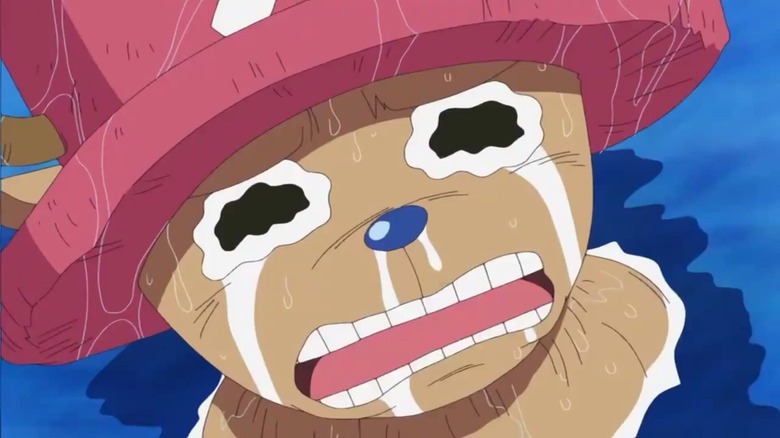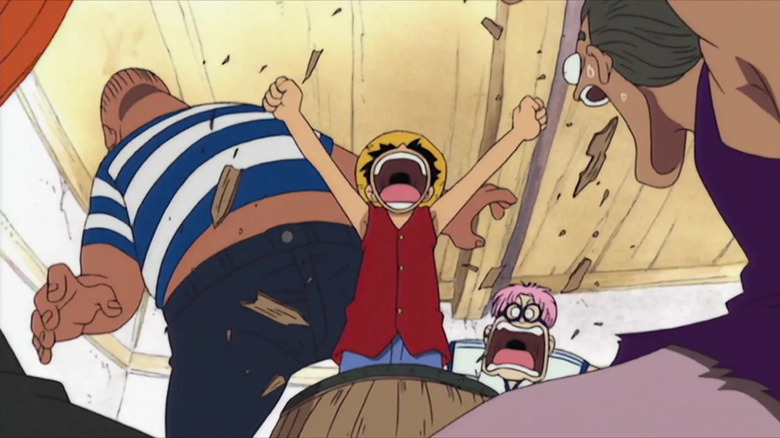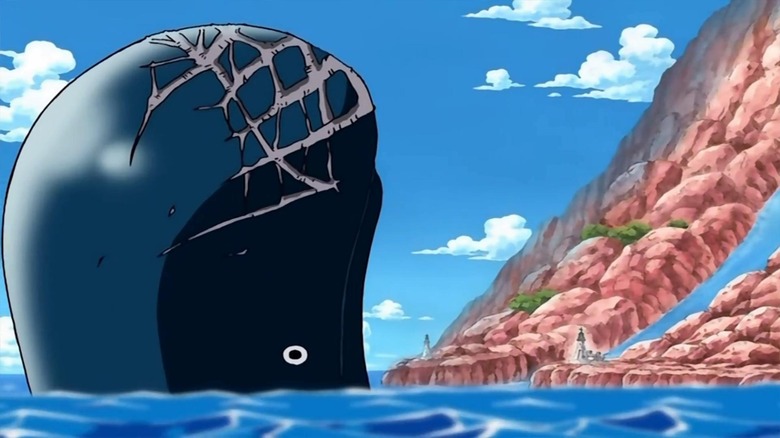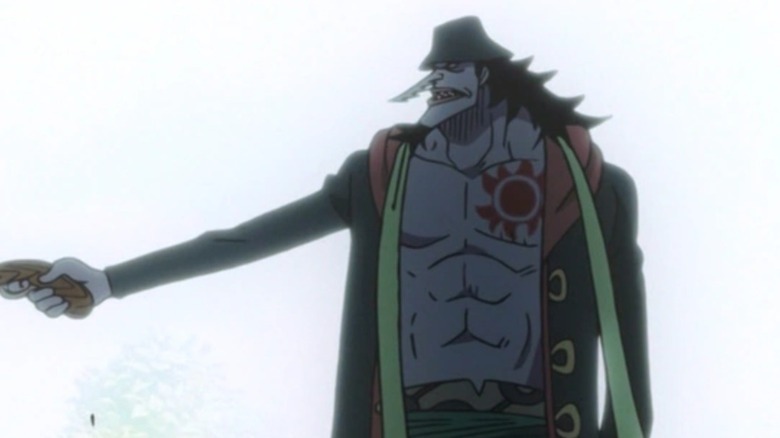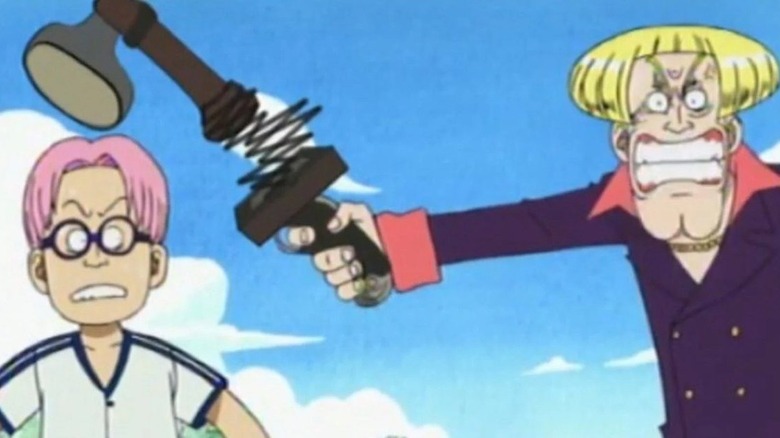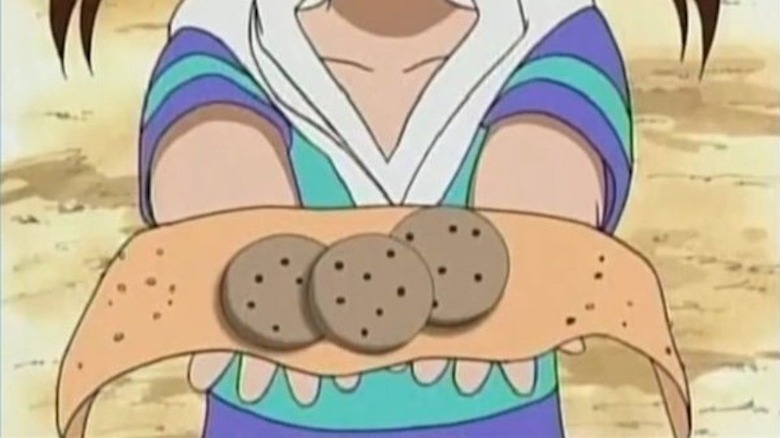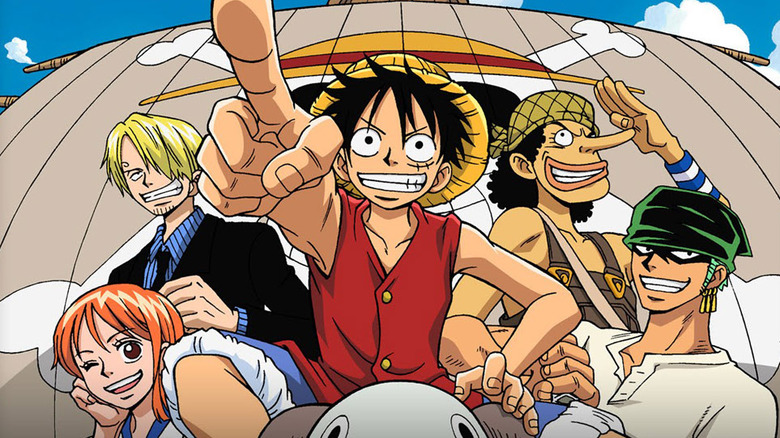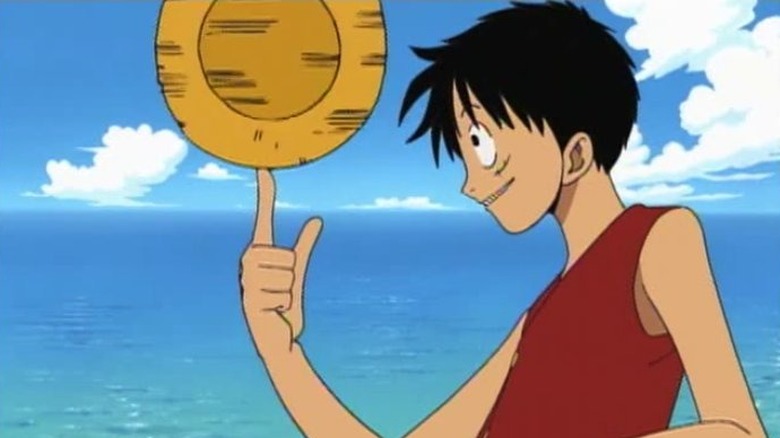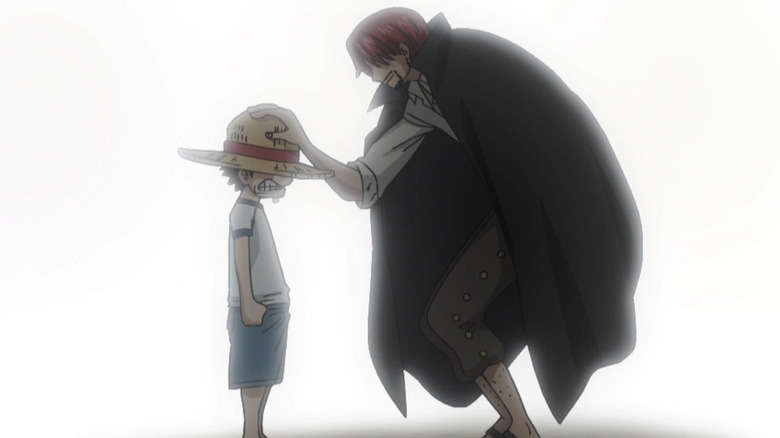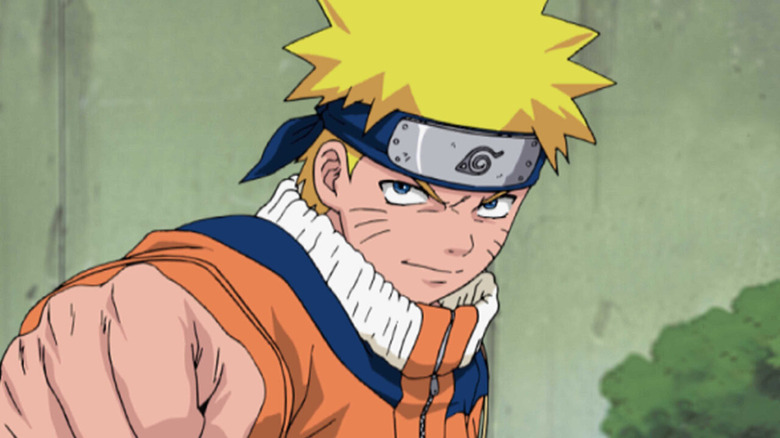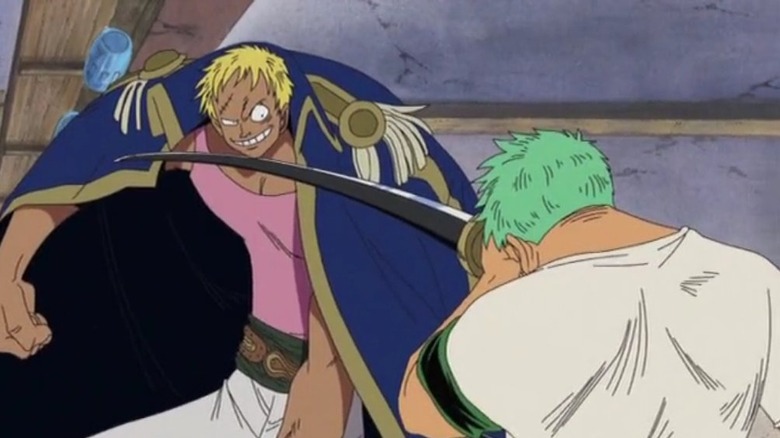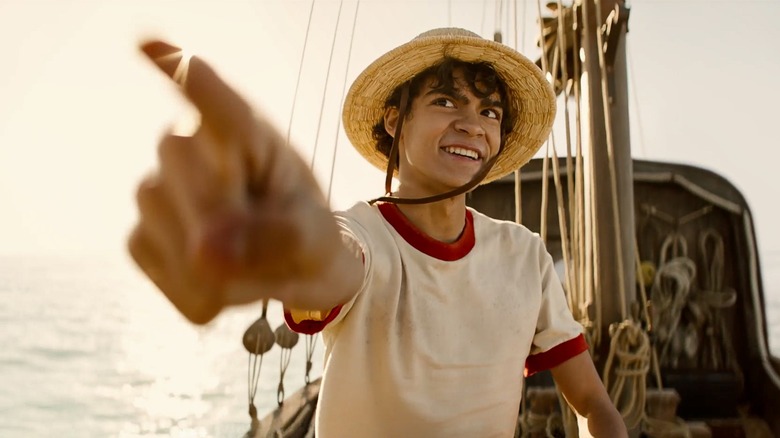The Real Reason The 4Kids One Piece Flopped So Hard
"One Piece" is one of the most popular manga and anime series in Japan, but it's never found quite the same mainstream success in America. There are multiple factors that could explain this. Perhaps the cartoony art style limited its appeal among American anime fans, or pirates lost to ninjas in the "pirate vs. ninja" meme wars of the 2000s. Or maybe the sheer length of the series (over 1,000 manga chapters and anime episodes!) intimidates potential viewers. And then there's the elephant in the room: The fact that many Americans' first exposure to "One Piece" was under the less-than-ideal circumstances of the 4Kids dub.
4Kids Entertainment already had a negative reputation among otaku for excessive editing and questionable localization choices when it acquired the license to "One Piece" in 2004. Kids still ate up the company's dubs of other anime like "Pokemon" and "Yu-Gi-Oh!" despite such changes, but the 4Kids dub of "One Piece" wasn't nearly so successful with kids when it aired on FoxBox and Cartoon Network from 2004 to 2007. Older viewers, meanwhile, were actively turned off by this version of the show, which so heavily altered the original that much of its appeal was lost.
It's been long enough since FUNimation (now Crunchyroll) took over the "One Piece" license and began releasing faithful subbed and dubbed versions of the anime that there's now a generation of "One Piece" fans who weren't even alive when the 4Kids dub was on the air. Young'uns, we're here to fill you in on the entire trainwreck. Be thankful you missed this.
Did 4Kids know what One Piece was?
The failure of the 4Kids version of "One Piece" seemingly started with a failure of research. Obviously, the company was aware of the anime's existence and its popularity in Japan, as it engaged in a heated and expensive bidding war to acquire the rights. But had the people in charge actually watched any of "One Piece" before licensing it? According to a 2010 episode of ANNCast with Mark Kirk, then 4Kids' Senior Vice President of Digital Media, they had not.
Kirk described "One Piece" as a show that got butchered even beyond 4Kids' typical extensive editing because it was so far from the standards of American network Saturday morning children's programming; as he put it, "[It was] a square peg in a round hole." Though Kirk was not at the company when the show was licensed, his "unofficial" theory based on working at 4Kids was, "There weren't the checks in place with the production team back then that there are now, in terms of screeners and tonal review, and they were just trying to acquire a hot property." But by the time the production side saw how much editing was needed, the licensing deal was done and dusted. The mess that followed was an attempt to make the show work for the FoxBox. Kirk went so far as to speculate that 4Kids was trying to get out of the deal.
39 episodes got cut out
To get a general sense of just how extreme 4Kids' editing was, the company dubbed 104 episodes of "One Piece" before losing the license — and the last episode they dubbed was Episode 143 of the original series. Yes, the equivalent of 39 episodes were completely skipped over. A full 20 episodes were totally missing, excising nearly six whole story arcs. Some of these arcs are filler that might not have been missed, but they also include the Reverse Mountain and Little Garden arcs, which introduce several important characters. It's not clear whether there were ever any particular content objections to these arcs or if they were just cut to speed through the story. Some fans speculate there was a desire to get to the introduction of the easily-merchandisable character Chopper sooner.
The rest of the discrepancies in the episode count are due to the practice of combining multiple episodes into one single episode. Because the violence in the original show was so far beyond what Saturday mornings on network television would allow, major cuts were made to appease standards and practices. As a result, some episodes became too short for the airing block and had to be combined with other episodes to fill the slot. Some episodes of the 4Kids "One Piece" dub combine scenes from as many as three episodes of the original series.
Death scenes were written out of the story
For many "One Piece" fans, the Arlong Park arc is the point where the series becomes truly great. Nami's betrayal of the Straw Hats is shocking, her backstory is heartbreaking, and her reunion with the Straw Hats to take down the Arlong Pirates is the story's most powerful moment yet. But the 4Kids dub completely botched the whole arc by removing the death of Nami's adoptive mother Bell-mère.
It's not as if the dub had a blanket "no death" policy (the opening theme still describes Gol D. Roger being hung from the gallows), so the fact it censored a death as significant as Bell-mère's is particularly frustrating. Instead of being killed by Arlong, she's sent to a dungeon — which you'd think a group of skilled pirates would have been able to break her out of. This sort of editing was frankly insulting to young viewers' intelligence.
Another example of 4Kids censoring death in "One Piece" made one character's fate arguably even worse. Kuina, the childhood friend of Zoro/Zolo (the varying translations of the swordsman's name are another can of worms), dies by falling down stairs in the original version of "One Piece." In the 4Kids version, she's taken out of the story not because she's dead, but because she's been beaten up so badly she can never fight again.
Understandable but silly-looking visual edits
Compared to the bigger story-altering changes, the visual edits made to get "One Piece" on American children's television are relatively more justifiable, and by no means the exclusive domain of 4Kids hackjobs. Remember the digital bikinis added to "Tenchi Muyo," and the various alterations made to guns on old-school Toonami? Of course, none of those gun edits were quite so memorable as Helmeppo's hammer-gun in Episode 3 of "One Piece." Points for creativity, and "One Piece" is cartoony enough that they almost got away with it — but the visual sure sticks out.
Other memorable visual alterations include turning other guns into Super Soakers, replacing Sanji's cigarette with a lollipop, inconsistent erasure of blood and cleavage, and painting a Christmas tree purple in an excessive attempt at avoiding any religious references. Every scene showing the word "Marine" was altered to say "Navy," which is closer to a proper English translation of the Japanese word kaigun but shows just how extensively 4Kids was willing to paint over nearly every frame of the show. And then there were other scenes where English text was just erased entirely, presumably related to CEO Al Kahn's insistence, "Kids today don't read." (via ICv2)
Erasure of Japanese cultural references
Some of the visual edits 4Kids made to "One Piece" weren't justified by even the most hyper-sensitive TV content standards; rather, they were the product of xenophobia. For example, look at the scene in the second episode where young girl Rika originally gives Zoro/Zolo rice balls. In the 4Kids edit, she gives him cookies instead — because acknowledging the existence of Japanese food was so inappropriate by their standards.
Trying to remove evidence of anime's Japanese origins was a general 4Kids practice. Given "One Piece" is already set in a multicultural fantasy world rather than in Japan, it was hit by this type of questionable localization less than other 4Kids licenses. CEO Al Kahn told Animation World Network in 2004 that his company actively sought to erase Japanese cultural references, saying, "By the time we localize the programs, kids don't even know they're from Japan any more." Never mind that so much of the booming interest in anime at this time was due to how different these shows were, both culturally and stylistically, from the popular American cartoons of the era.
According to voice actor Eric Stuart, some of these changes were requested by the Japanese licensors in hopes of making their shows more universally appealing. Maybe making these kinds of edits made sense when 4Kids started dubbing "Pokemon." But the fact that the company kept making these changes long after other successful anime licensors had fully embraced the Japanese-ness of their product calls this claim into question.
All the background music was replaced
An old-fashioned practice 4Kids continued throughout the 2000s, well after all other major anime distributors had stopped doing it, was replacing all background music with a new soundtrack. On a practical level, replacing the original soundtracks made it easier to avoid audio continuity errors when needing to heavily edit an anime. It also further "Americanized" the shows to make them sound more similar to every other American cartoon, as well as allowed distributors to make money from licensing their replacement music.
In the case of "One Piece," this practice proved particularly annoying because the anime's original orchestral music, composed by Kohei Tanaka and Shirō Hamaguchi, is amazing. The many recurring musical themes are arguably as vital in defining the characters and tone as the writing and animation are; to lose all that is to lose a vital ingredient of the show's quality. The 4Kids replacement music, in contrast, is so generic that much of it is literally recycled from other anime dubs.
The opening was replaced with an awful rap
The most infamous of 4Kids' many changes to the "One Piece" soundtrack has to be the opening theme. Now, 4Kids replacing Japanese openings was expected (and, in all fairness, their "Pokemon" opening is a banger). Before the "One Piece" dub premiered, fans actually got their hopes up when the company made an English version of the first Japanese opening, "We Are!" But somehow, this solid translation got abandoned and replaced with the song known as "The Pirate Rap."
Why this change? Al Kahn told Anime News Network, "We liked it, we thought it was good. And we thought it was going to be something that'd have a lot of popularity." Nowadays, it's easier to look back on such terrible lyrics as "Yo-ho-ho, he took a bite of Gum-Gum" as so-bad-they're-good, as well as to appreciate the effort Shawn "Freshco" Conrad put into giving this silliness some semblance of flow. At the time, however, replacing a great theme song that captures the optimistic spirit of "One Piece" with such a forced and failed attempt at coolness only enraged fans of the original.
Uncut DVDs were discussed but never released
All of the above problems with the American TV broadcast of "One Piece" might not have enraged fans quite as dramatically had 4Kids also provided an uncut DVD release. This was standard practice among every other anime licensor in the 2000s; "Dragon Ball Z," for instance, had notable censorship and an altered soundtrack on American TV, but purists could enjoy the original Japanese version with subtitles on DVD thanks to FUNimation. But for as long as 4Kids held the license for "One Piece," the original Japanese version of the show was only accessible internationally via means that are way too easy to write bad puns about when discussing a show about pirates.
4Kids briefly dipped its toes into uncut dubbed and subbed DVD releases with three volumes of "Yu-Gi-Oh!" and two volumes of "Shaman King." While Al Kahn told Anime News Network in 2005 that these uncut releases did fairly well, that level of success apparently wasn't enough for 4Kids to get any further in those releases. Kahn also said there was a possibility of an uncut "One Piece" release, going so far as to claim, "We expect every series we license to be released in its original form." While "One Piece" eventually got an uncut release, 4Kids had nothing to do with it.
More faithfully dubbed anime did much better
The party line at 4Kids was that the excessive changes the company made to anime were necessary not only to get the shows on TV, but to make them more widely appealing to American kids. By the time they were Americanizing "One Piece," this philosophy was increasingly challenged by the growing success of anime dubs that didn't try to hide their material's cultural origins. Many of these anime series developed a much stronger foothold in the American mainstream than "One Piece" did.
For purposes of direct comparison, let's look at the handling of the other two shows commonly grouped alongside "One Piece" as the "Big Three" of 2000s Shonen Jump: "Naruto" and "Bleach." "Naruto" premiered on Toonami in 2005 and aired back-to-back with reruns of "One Piece," but "Naruto" had a faithful dub, preserving all Japanese cultural references and most of the original music, and aired with relatively minimal editing for a TV-PG rating. It instantly became way more popular with American kids that "One Piece" ever was. "Bleach" bypassed kids' TV entirely and aired uncut on Adult Swim, where it was still successful with a wide range of viewers. The 4Kids edits meant to make "One Piece" more successful in America ultimately gave it a disadvantage against the competition.
4Kids lost the license to FUNimation
In December 2006, it was confirmed that 4Kids had officially stopped dubbing "One Piece." Four months later, FUNimation rescued the license and got to work on delivering a much more faithful dub, as well as making the original subtitled version of the series available. The first faithfully-dubbed, lightly-edited FUNimation episode to air on Toonami was episode 144, the start of the Jaia arc, in September 2007. At this point in the American run, however, it was too late to turn the show's poor fortunes around, and Cartoon Network ultimately let the broadcasting rights to "One Piece" lapse in March 2008.
"One Piece" has had a spotty record on American TV since then, returning to the Adult Swim version of Toonami in 2013 only to be removed due to unsatisfying ratings in 2017 and return once again in 2022 at a time when Nielsen ratings had declined across the board on cable. Fortunately for the fans, FUNimation, which merged with Crunchyroll in 2022, has continued to release the full series uncut on DVD and Blu-Ray, as well as make new episodes available for streaming immediately after they air in Japan and releasing new "One Piece" movies in theaters.
Did One Piece's popularity in America ever recover?
In recent years, the international popularity of "One Piece" seems to have benefited from the growing mainstream popularity of anime. It's finally become popular enough in the States that the premiere of Episode 1071 on August 6, 2023 actually crashed Crunchyroll's servers! And yet "One Piece" isn't merely "popular" in Japan — it's one of the biggest media franchises of all time almost entirely due to the Japanese market. Due in part to the missteps of the 4Kids dub giving Americans a poor first impression, "One Piece" might never be as popular in America as the Japanese license-holders want it to be.
This failure to make "One Piece" as big internationally as it is in Japan seems to be one of the main reasons creator Eichiiro Oda has been so gung-ho about making the live-action Netflix adaptation. In a letter from Oda posted by Netflix's official Twitter account, the manga creator wrote, "Considering my expected lifespan, I believe this is my last chance to bring 'One Piece' to the entire world." While it's somewhat sad that the anime and manga aren't considered enough to "bring 'One Piece' to the entire world," Oda seems hopeful that the Netflix show has finally broken through any lingering reluctance from international audiences to enjoy his epic creation.
